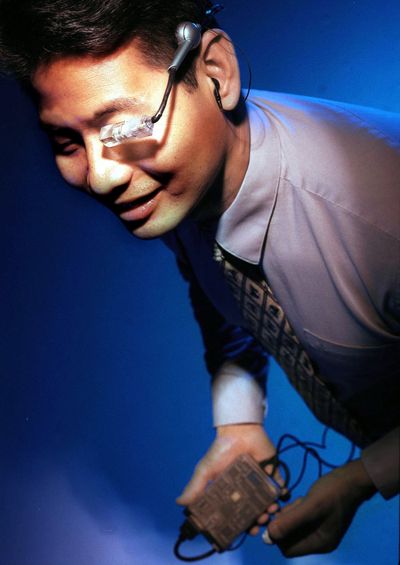Wearable technology could be next big thing
Internet-connected glasses, wristwatches in development

A wristwatch that reads your text messages out loud, a jacket that heats up when you’re cold, eyeglasses that display directions as you walk down the street.
Gimmicks, or fashion of the future?
Although those products may seem like something out of a James Bond movie, the world’s largest technology companies and startups alike believe “wearable tech” is the next big frontier, and they have been pouring money and research into developing high-tech clothing and accessories.
“It’s a function of time before wearable technology becomes real, and it’s closer than a lot of people think,” said Gene Munster, senior research analyst at Piper Jaffray. “Eventually, wearable technology is probably going to be your most easy access point to your technology.”
Google Inc., the world’s largest Internet company, has been testing augmented-reality eyeglasses that feature cameras and use voice recognition. Apple Inc. is reportedly working on a watch that would have some of the same functions as a smartphone.
The idea behind “wearables” is to integrate technology into everyday basics, but it’s more than just inserting a gee-whiz factor into your favorite pair of jeans. Bringing tech into the fold, developers say, will create a more seamless experience with technology that involves fewer devices to carry around and less time rummaging through your purse or pocket.
But there are numerous challenges to overcome before wearable tech can become mainstream. Developers are working on improving battery life, scaling the technology down and making the products affordable.
Companies also need to persuade the public to accept the notion that digital devices and fashion can co-exist in one unit by designing wearables that don’t look too techie and figuring out what kinds of functions to embed within the products.
“We have a lot of research to do,” said Cory Booth, a user experience researcher at Intel, which has a team looking into the potential for wearables.
For now, wearable tech is taking off in the sports and health markets.
Goggles made by Oakley assist snowboarders via a display that integrates GPS capabilities, Bluetooth and sensors that gauge jump analytics such as distance, height and airtime. There’s also smartphone connectivity and the ability to locate and track friends via an app.
But tech companies have goals that stretch beyond fitness, with the goal of equipping clothing with minicomputers and sensors.
The tech-fashion hybrid that has gotten the most attention so far is Google Glass, Web-connected eyeglasses that the company has been previewing to big buzz in recent months. The futuristic glasses are still in the early stages of development under the company’s secretive Google X lab.
Although wearables are still a ways from widespread, mass-market adoption, analysts say they could one day replace smartphones altogether. Some have hinted that wearables are the gateway to implantable technology, such as microchips and sensors lodged under the skin.
But with tech worn all over the body, and perhaps one day within the body, some wonder whether the clothes and accessories are truly simplifying life or just making it even more complicated.